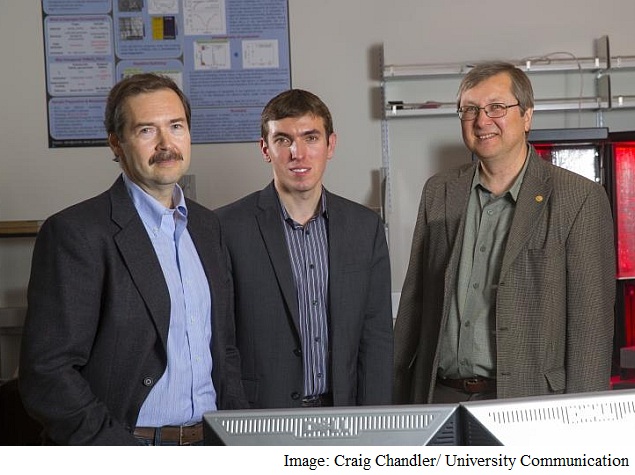- Home
- Science
- Science News
- Graphene Ferroelectric Tunnel Junction Boosts Digital Memory: Study
Graphene Ferroelectric Tunnel Junction Boosts Digital Memory: Study

Researchers from University of Nebraska-Lincoln have employed Nobel Prize-winning material graphene to enhance the properties of a component primed for the next generation of high-speed, high-capacity random-access memory (RAM).
The team engineered and tested improvements in the performance of a memory structure known as a ferroelectric tunnel junction.
Ferroelectric materials naturally boast the quality of "non-volatility", meaning they maintain their polarisation - and can hence retain stored information - even in the absence of an external power source.
The team became the first to design a ferroelectric junction with electrodes made of graphene - a carbon material only one atom thick.
They placed ammonia between graphene and the ferroelectric layer.
The researchers found that their graphene-ammonia combination improved the reliability of RAM devices and allows them to read data without having to rewrite it.
"This is one of the most important differences between previous technology that has already been commercialised and this emergent ferroelectric technology," said Alexei Gruverman, a Charles Bessey Professor of physics who co-authored the study.
The findings appeared in the journal Nature Communications.
Catch the latest from the Consumer Electronics Show on Gadgets 360, at our CES 2026 hub.
Related Stories
- Samsung Galaxy Unpacked 2025
- ChatGPT
- Redmi Note 14 Pro+
- iPhone 16
- Apple Vision Pro
- Oneplus 12
- OnePlus Nord CE 3 Lite 5G
- iPhone 13
- Xiaomi 14 Pro
- Oppo Find N3
- Tecno Spark Go (2023)
- Realme V30
- Best Phones Under 25000
- Samsung Galaxy S24 Series
- Cryptocurrency
- iQoo 12
- Samsung Galaxy S24 Ultra
- Giottus
- Samsung Galaxy Z Flip 5
- Apple 'Scary Fast'
- Housefull 5
- GoPro Hero 12 Black Review
- Invincible Season 2
- JioGlass
- HD Ready TV
- Laptop Under 50000
- Smartwatch Under 10000
- Latest Mobile Phones
- Compare Phones
- OPPO Reno 15 Pro Max
- Honor Win RT
- Honor Win
- Xiaomi 17 Ultra Leica Edition
- Xiaomi 17 Ultra
- Huawei Nova 15
- Huawei Nova 15 Pro
- Huawei Nova 15 Ultra
- Asus ProArt P16
- MacBook Pro 14-inch (M5, 2025)
- OPPO Pad Air 5
- Huawei MatePad 11.5 (2026)
- Xiaomi Watch 5
- Huawei Watch 10th Anniversary Edition
- Acerpure Nitro Z Series 100-inch QLED TV
- Samsung 43 Inch LED Ultra HD (4K) Smart TV (UA43UE81AFULXL)
- Asus ROG Ally
- Nintendo Switch Lite
- Haier 1.6 Ton 5 Star Inverter Split AC (HSU19G-MZAID5BN-INV)
- Haier 1.6 Ton 5 Star Inverter Split AC (HSU19G-MZAIM5BN-INV)














